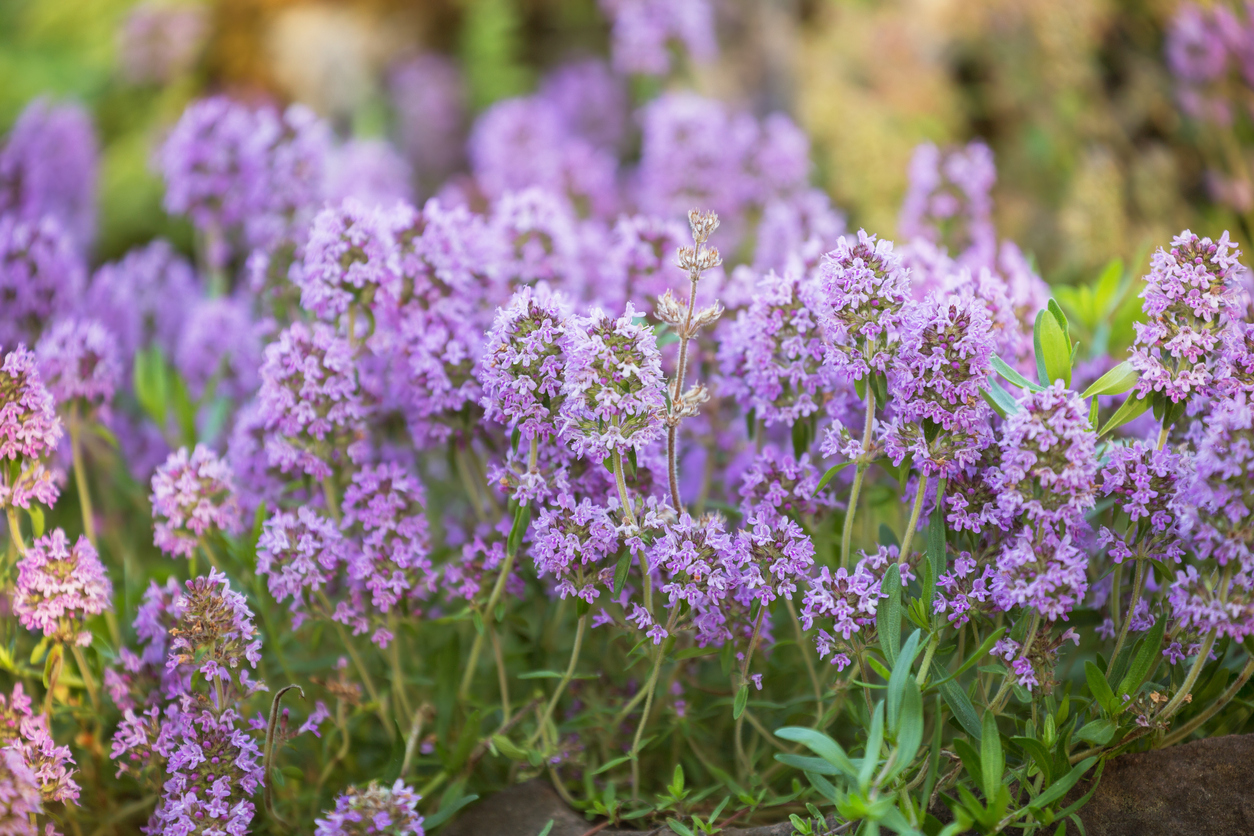Rosemary & Thyme: A Culinary Guide To Herb Gardening

Table of Contents
Planning Your Herb Garden
Creating a thriving herb garden starts with careful planning. Understanding the needs of rosemary and thyme is crucial for success in your herb gardening journey.
Choosing the Right Location
Sunlight is key for healthy rosemary and thyme growth. These Mediterranean natives thrive in sunny locations.
- Sunlight: Aim for at least 6 hours of direct sunlight per day. A south-facing location (in the Northern Hemisphere) is ideal.
- Drainage: Well-drained soil is paramount. Poor drainage leads to root rot, a common problem for these herbs. Amend heavy clay soils with compost or other organic matter to improve drainage.
- Proximity to the Kitchen: Plant your herbs close to your kitchen for easy access during cooking. This makes harvesting fresh herbs a breeze!
- Soil Type: Sandy loam and clay loam are suitable soil types. Adjust soil pH if necessary, as rosemary and thyme prefer slightly alkaline conditions (pH 6.0-7.5).
Selecting Rosemary and Thyme Varieties
With numerous varieties available, choosing the right rosemary and thyme for your herb garden is important.
- Rosemary Varieties: Upright rosemary is a classic choice, growing tall and producing abundant leaves. Prostrate rosemary spreads horizontally, ideal for ground cover or hanging baskets. Trailing rosemary cascades beautifully from containers.
- Thyme Varieties: English thyme (common thyme) is a versatile culinary herb. Lemon thyme offers a bright citrusy flavor, while creeping thyme forms a dense mat, perfect for edging or pathways.
- Flavor Profiles: Consider the flavor profiles of different varieties. Some rosemary varieties have a more intense piney flavor than others. Thyme varieties range from subtly peppery to distinctly lemony.
- Climate Considerations: Choose varieties suited to your climate. Some rosemary varieties are more cold-hardy than others.
Starting from Seed or Transplant
Both starting from seed and using transplants have their advantages and disadvantages in your herb gardening endeavor.
- Seeds: Starting from seed is cost-effective but requires more patience. Seeds need warmth and moisture to germinate. Sow seeds indoors 6-8 weeks before the last expected frost, then transplant outdoors.
- Transplants: Transplants offer a quicker route to a mature herb plant. Buy healthy transplants from a reputable nursery. Choose plants that are free of pests and diseases.
- Planting: Whether starting from seed or transplant, ensure proper spacing (12-18 inches apart for rosemary, 6-12 inches for thyme). Plant at the same depth as they were growing in their containers.
Caring for Your Rosemary and Thyme
Consistent care is essential for healthy growth and bountiful harvests in your herb garden.
Watering Techniques
Proper watering is crucial, preventing both underwatering and overwatering.
- Deep Watering: Water deeply but infrequently. Allow the soil to dry slightly between waterings.
- Overwatering Prevention: Avoid overwatering, which can lead to root rot. Water at the base of the plants to avoid wetting the foliage.
- Mulching: Apply a layer of mulch (e.g., straw, wood chips) to retain soil moisture, suppress weeds, and regulate soil temperature.
- Weather Adaptation: Adjust watering frequency based on weather conditions. Water more frequently during hot, dry periods.
Fertilizing Your Herbs
Rosemary and thyme are relatively low-maintenance herbs that don't require heavy fertilization.
- Low Fertilizer Needs: Over-fertilizing can actually harm these herbs.
- Organic Options: Use compost or a balanced organic fertilizer sparingly. A slow-release fertilizer is ideal.
- Avoid Excess: Too much fertilizer can result in leggy growth and reduced flavor.
- Nutrient Deficiency Signs: Look out for signs of nutrient deficiency, such as yellowing leaves.
Pest and Disease Control
While generally resilient, rosemary and thyme can be susceptible to certain pests and diseases.
- Common Pests: Aphids and spider mites are common pests. Monitor your plants regularly for infestations.
- Natural Pest Control: Use natural pest control methods such as insecticidal soap or neem oil. Encourage beneficial insects like ladybugs.
- Disease Prevention: Good air circulation helps prevent fungal diseases. Avoid overhead watering.
- Disease Treatment: Address diseases promptly if they appear, using appropriate fungicides if necessary.
Harvesting and Using Rosemary and Thyme
Harvesting at the right time and using your herbs effectively enhances your culinary experiences.
Harvesting Techniques
Proper harvesting ensures continuous growth and flavorful herbs.
- Harvest Timing: Harvest rosemary and thyme just before flowering for the best flavor.
- Pruning: Prune regularly to encourage bushier growth and prevent legginess. Pinch back tips to promote branching.
- Drying: Dry herbs by hanging them upside down in a cool, dark, and well-ventilated area.
- Freezing: Freeze herbs in ice cube trays with water or oil to preserve their flavor and aroma for later use.
Culinary Applications
Rosemary and thyme are incredibly versatile herbs used in many dishes.
- Recipes: Add rosemary to roasted meats, potatoes, and soups. Thyme complements chicken, vegetables, and stews.
- Fresh vs. Dried: Fresh herbs offer a more intense flavor than dried herbs.
- Flavor Pairings: Rosemary pairs well with garlic, lemon, and potatoes. Thyme complements mushrooms, onions, and tomatoes.
- Health Benefits: Both herbs possess antioxidant and anti-inflammatory properties.
Conclusion
Growing your own rosemary and thyme is a rewarding experience, bringing the vibrant flavors of the Mediterranean to your kitchen table. By following these simple steps and understanding the unique needs of these herbs, you can create a thriving herb garden that provides fresh, flavorful ingredients for years to come. Start your own herb gardening journey today and experience the magic of homegrown rosemary and thyme! Learn more about successful herb gardening techniques and expand your culinary horizons. Discover the joy of fresh herbs and elevate your cooking with expert herb gardening knowledge!

Featured Posts
-
 Nigora Bannatynes Chic Co Ord A Look At Her Fit Body
May 31, 2025
Nigora Bannatynes Chic Co Ord A Look At Her Fit Body
May 31, 2025 -
 Croque Monsieur Una Receta Simple Para Principiantes
May 31, 2025
Croque Monsieur Una Receta Simple Para Principiantes
May 31, 2025 -
 New Covid 19 Variant A Concerning Uptick In Cases Says Who
May 31, 2025
New Covid 19 Variant A Concerning Uptick In Cases Says Who
May 31, 2025 -
 Sanofi Et Dren Bio Accord Majeur Sur Les Anticorps Bispecifiques
May 31, 2025
Sanofi Et Dren Bio Accord Majeur Sur Les Anticorps Bispecifiques
May 31, 2025 -
 Finding The Good Life A Balanced Approach To Happiness And Success
May 31, 2025
Finding The Good Life A Balanced Approach To Happiness And Success
May 31, 2025
